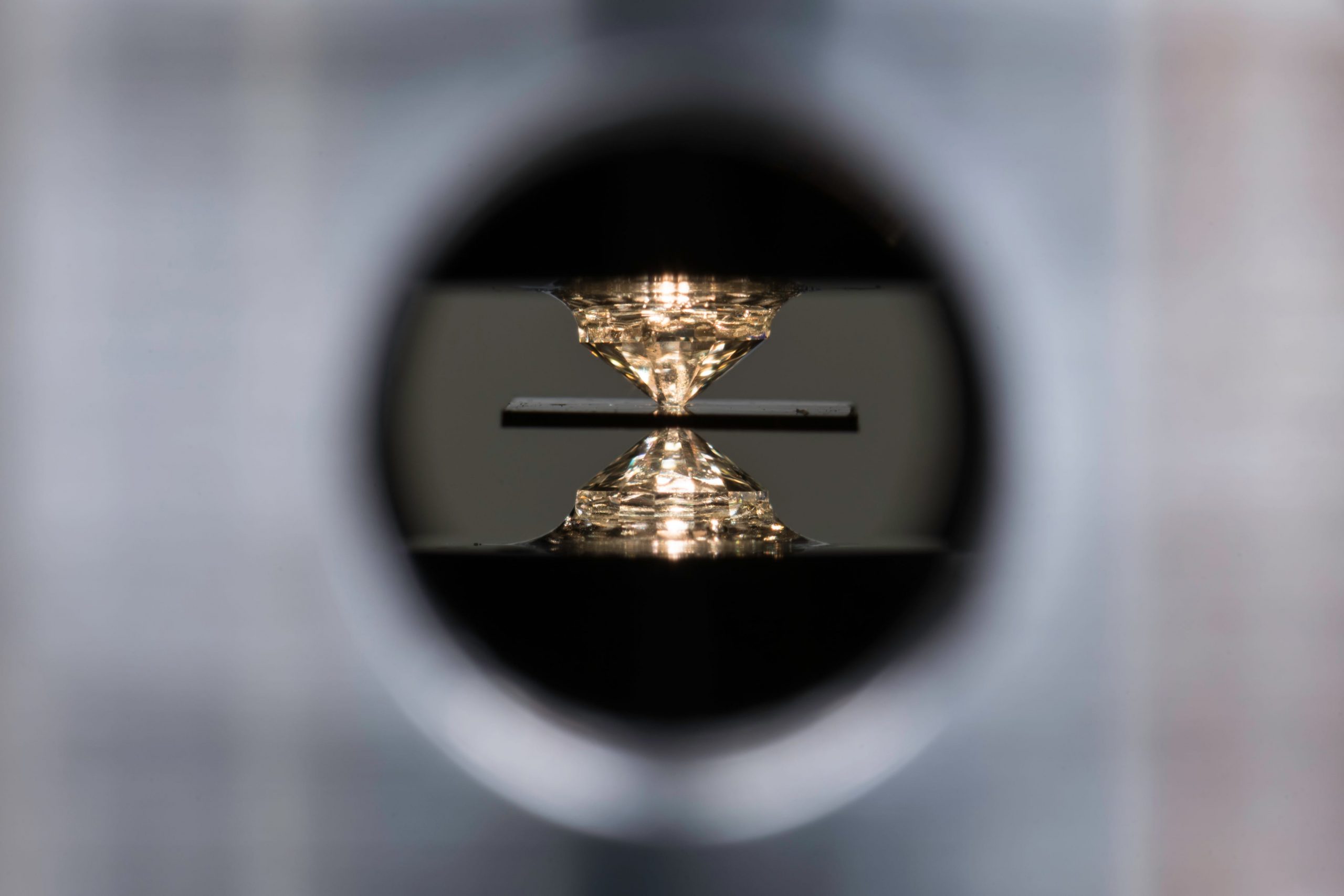
J. Adam Fenster/University of Rochester
- Superconductors are materials that effortlessly conduct electricity.
- Until now, they’ve only worked at temperatures of minus 100 degrees Fahrenheit.
- But researchers recently found a superconductor that works at ambient temperatures when under immense pressure. They’re now trying to make it work without that pressure.
- Widespread superconductors could give rise to high-speed floating trains, super-powered computers, and very cheap electricity.
- Visit Business Insider’s homepage for more stories.
Superconductors – materials that transport electricity with no energy lost – have until now only worked at extremely cold temperatures, from about -100 degrees Fahrenheit to the near-absolute zero of space. But this month, that changed.
In a study published October 14, a team of researchers described a superconductor they engineered, which works at 59 degrees Fahrenheit. The material is composed of carbon, sulfur, and hydrogen, so is appropriately called carbonaceous sulfur hydride.
Physicists had previously found that a combination of hydrogen and sulfur worked as a superconductor under intense pressure and at -94 degrees Fahrenheit. With the addition of carbon, the team was able to create a material that worked at a higher temperature.
Ranga Dias, a professor of mechanical engineering at the University of Rochester, told Business Insider that they did so by “chemically compressing instead of mechanically compressing” the material. In other words, they made a denser material by adding carbon and sulfur atoms into a pre-existing network of hydrogen atoms.

J. Adam Fenster/University of Rochester
So far, Dias said, his team has only been able to create tiny specks of the superconductor material, about the size of ink-jet particles. The specks are made under almost 40 million pounds per square inch of pressure, almost the pressure in Earth’s inner core. They only function as superconductors under that level of pressure, too.
"Somebody can argue that, 'so you went from one extreme to another extreme,'" Dias said.
However, he added, now that it's clear a superconductor can function at room temperature, the researchers can start tinkering with their material to make it work at ordinary pressure levels.
If they succeed, superconductors could become widespread – potentially causing dramatic advances in technology by making electricity faster, cheaper, and more powerful.
What a superconducting society would look like
Electrical currents are flows of electrons that move through materials. Electrons move through certain types of materials easily, including most metals. Materials that convey electricity more easily are called conductors. But electrons have a harder time moving through materials like rubber and wood, so currents that try to pass through those materials tend to weaken. These materials are called insulators.
Most electricity in the US is transported through conductors and semiconductors, which can convey electricity, but not perfectly, so some energy always gets lost. A superconductor, on the other hand, has zero resistance; electrons move freely through the material. An electric current traveling through a superconducting material doesn't weaken or dissipate.
If superconductors could function at the range of temperatures and pressures seen above ground on Earth, they could change society as we know it, Dias said.

J. Adam Fenster/University of Rochester
A world with widespread superconductors, he said, could save society billions of dollars on electricity per year. It could also have high-speed trains that would float above magnetic tracks.
This is because the movement of electrons creates a magnetic field. In a superconductor, some freely moving electrons move toward the surface, pushing the material's magnetic field outward. That repels other magnetic fields, so when a superconductor meets a magnet, the two objects will push against each other.
In the case of a train, a superconducting material on the car's underside could repel magnetic tracks below it.
Superconductors that function at normal temperatures and pressures could also give rise to computers so powerful that they'd make our most compact, advanced machines today look like the room-sized IBM computers of the 1950s and 60s.

Noel Harold Stubbs/Fairfax Media via Getty Images
But first, Dias and his colleagues are trying to figure out whether the hydrogen compounds they studied could be made "meta-stable" – that is, whether they could stay in solid form after they're created under pressure, even once that pressure is removed.
Diamonds, the form carbon takes after being subjected to extreme pressure, are examples of meta-stable materials on Earth. Even after they are brought to ambient pressure levels, diamonds last for millions or billions of years (before eventually reverting to graphite). Researchers have figured out how to grow diamonds in a lab; Dias hopes they could do the same with a meta-stable version of the superconductor they created.
To work towards that goal, Dias and his study co-author, Ashkan Salamat, formed a startup called Unearthly Materials. The company is currently raising funds for further superconductivity research.
"Hopefully the next two, three years are going to be exciting," Dias said.
Even if the team's material doesn't work without added pressure, their findings could catalyze a flood of new developments in relation to superconductors, according to Russell Hemley, a professor of chemistry and physics at the University of Illinois at Chicago.
"This may be just a tip of the iceberg of a broader set of discoveries," Hemley told The New York Times.

